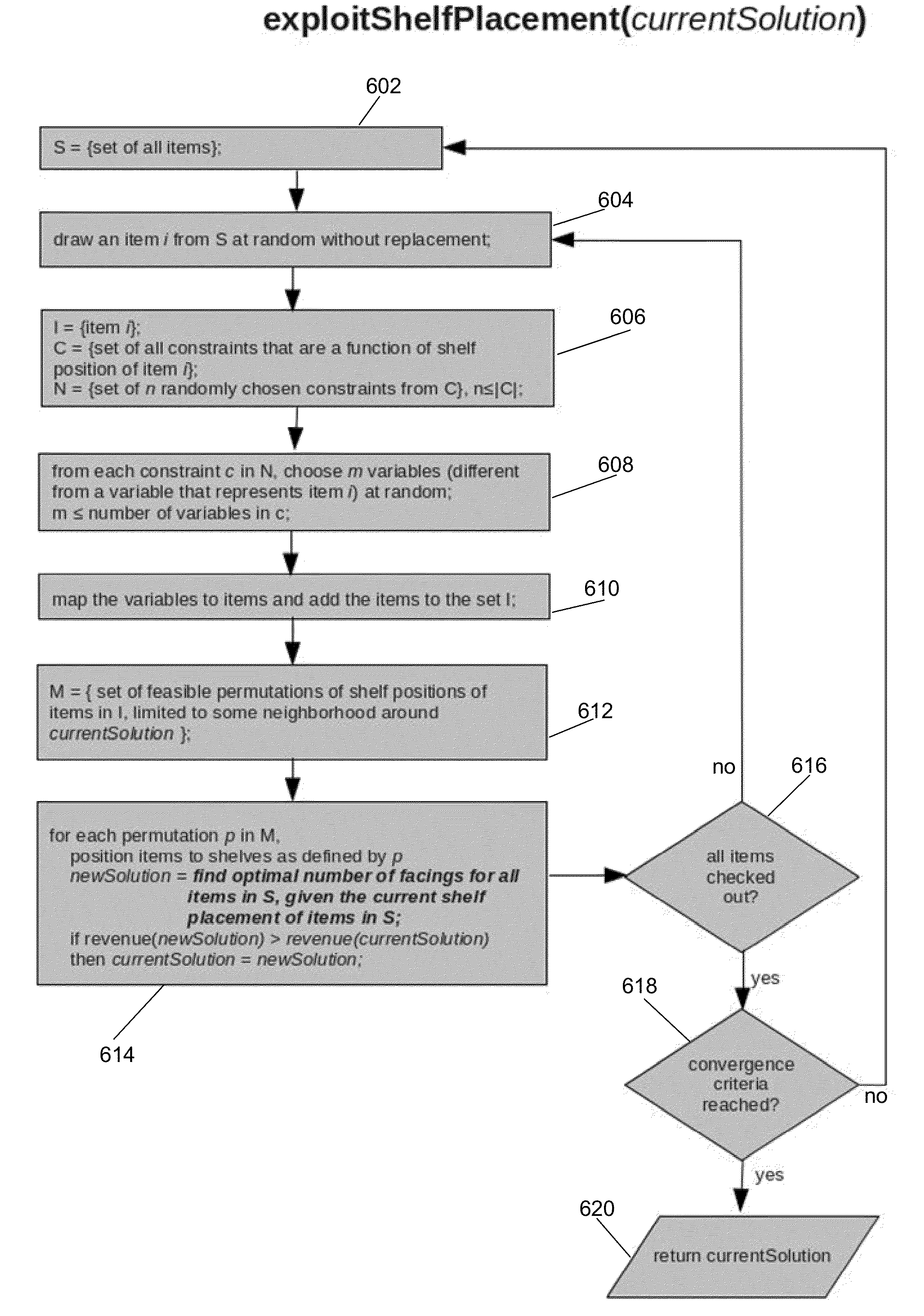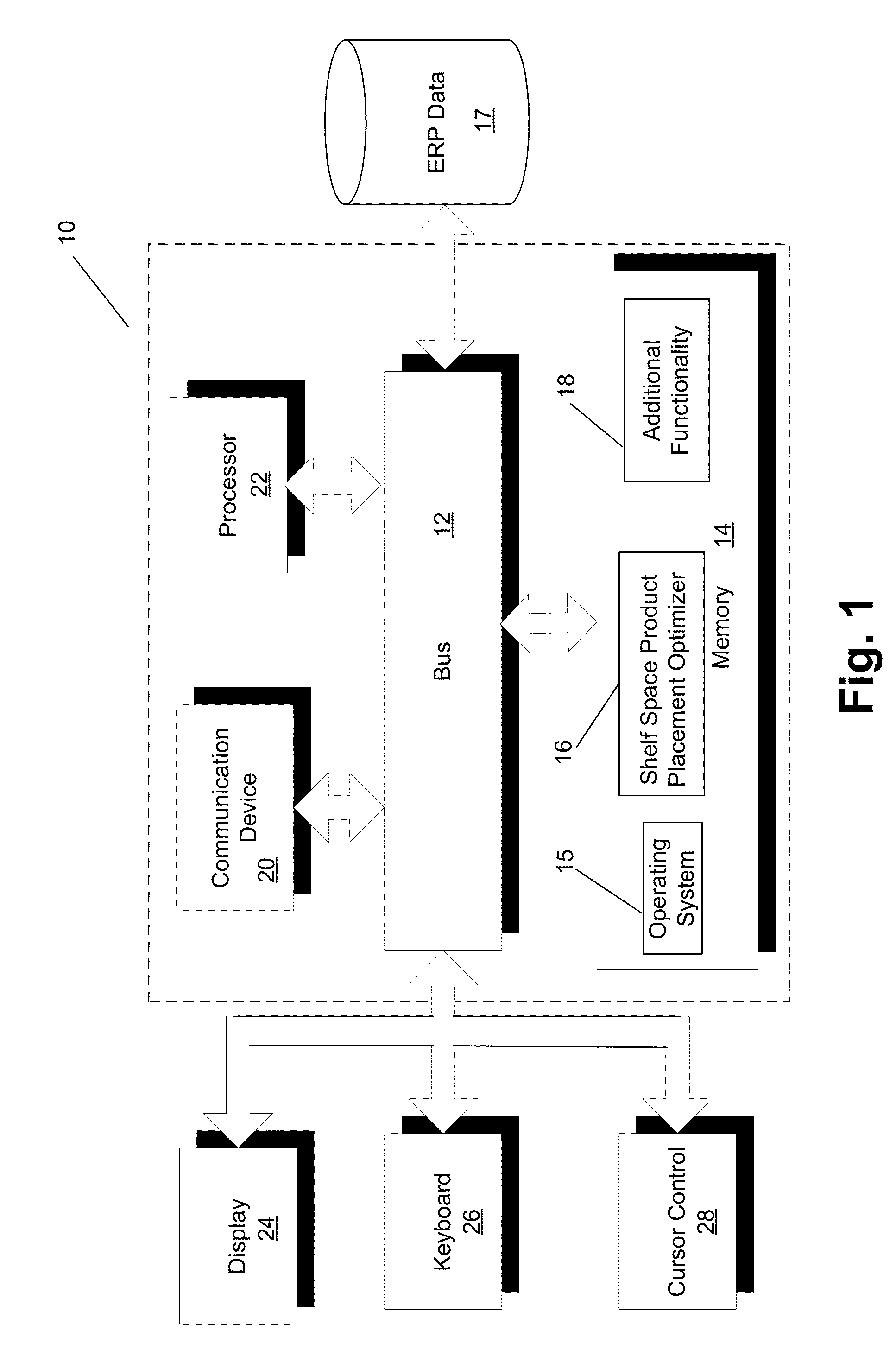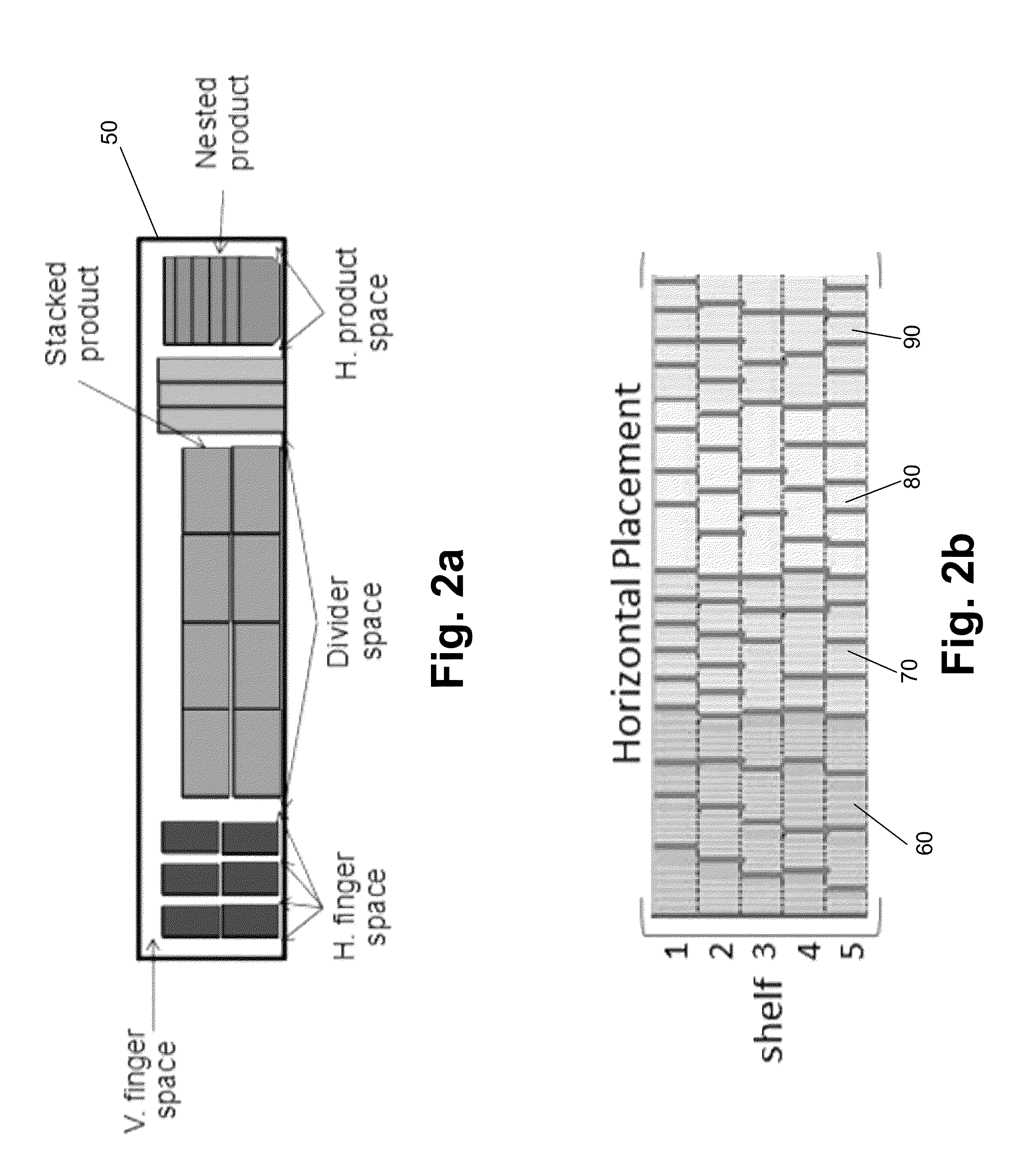Shelf space product placement optimizer
a shelf space and product technology, applied in the field of computer systems, can solve the problem of most facings, and achieve the effect of optimizing shelf space placemen
- Summary
- Abstract
- Description
- Claims
- Application Information
AI Technical Summary
Benefits of technology
Problems solved by technology
Method used
Image
Examples
Embodiment Construction
[0018]One embodiment optimizes shelf space placement by alternating between a randomized search (“RS”) heuristic and solving a Mixed-Integer Linear Program (“MILP”) in order to determine, for a retail item, which shelf the item should be assigned and the number of its facings. The determination maximizes at least one of a key performance indicator (“KPI”), such as revenue, profit or sales volume.
[0019]FIG. 1 is a block diagram of a computer system 10 that can implement an embodiment of the present invention. Although shown as a single system, the functionality of system 10 can be implemented as a distributed system. System 10 includes a bus 12 or other communication mechanism for communicating information, and a processor 22 coupled to bus 12 for processing information. Processor 22 may be any type of general or specific purpose processor. System 10 further includes a memory 14 for storing information and instructions to be executed by processor 22. Memory 14 can be comprised of any...
PUM
 Login to View More
Login to View More Abstract
Description
Claims
Application Information
 Login to View More
Login to View More - R&D
- Intellectual Property
- Life Sciences
- Materials
- Tech Scout
- Unparalleled Data Quality
- Higher Quality Content
- 60% Fewer Hallucinations
Browse by: Latest US Patents, China's latest patents, Technical Efficacy Thesaurus, Application Domain, Technology Topic, Popular Technical Reports.
© 2025 PatSnap. All rights reserved.Legal|Privacy policy|Modern Slavery Act Transparency Statement|Sitemap|About US| Contact US: help@patsnap.com



